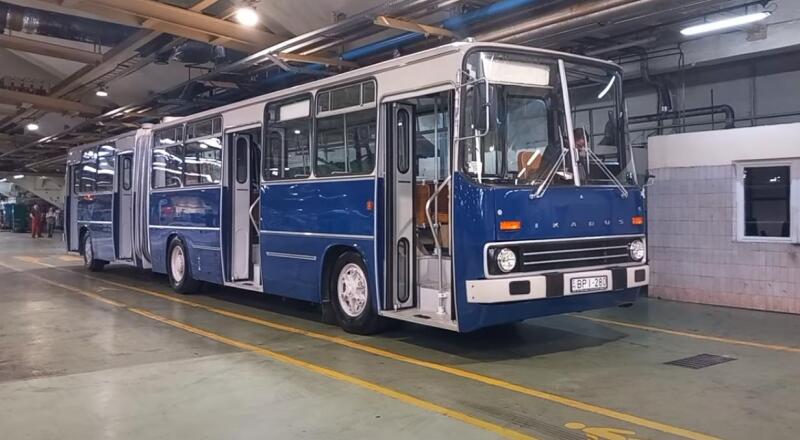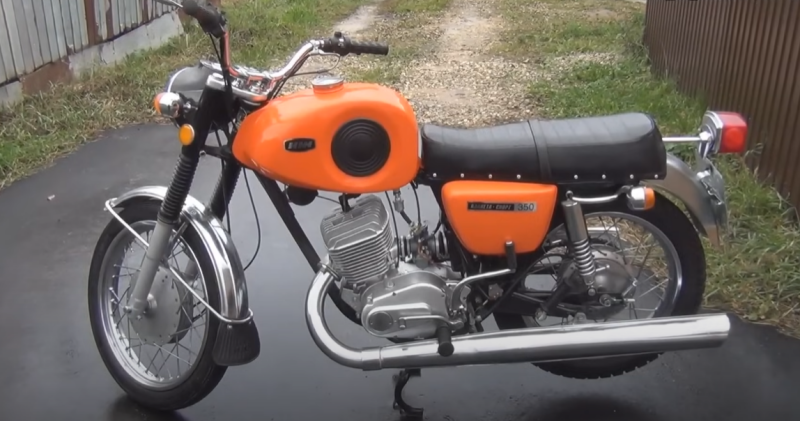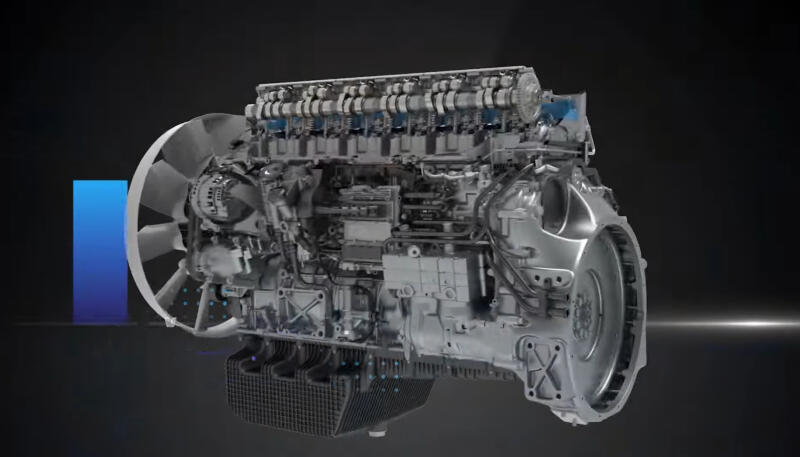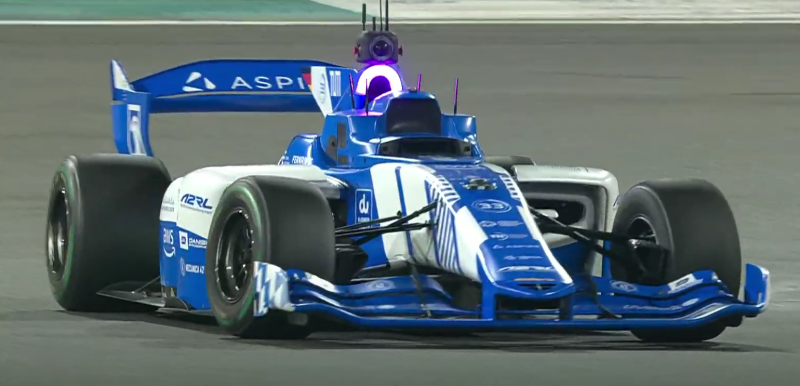A similar modest enterprise was created in the Moldovan capital (1945). The absence of any serious ambitions was confirmed by a very limited staff, literally consisting of several dozen people. But the trouble has begun. After just three years, the engine repair facilities turned into a full-fledged Chisinau repair plant. His profile, in addition to automotive equipment, included the production of machine tools and other restoration equipment.
 Large cabin for a small T-70 tractor. Photo: youtube.com
Large cabin for a small T-70 tractor. Photo: youtube.comTen years later, the specificity of Moldovan capacities is completely directed towards the production of automobile parts and other components. But already in the early 60s, the plant with the modest name “Avtodetal” underwent serious reconstruction. Her goal was repurposing with a view to doing real business. If before this only individual spare parts were produced here, now the expanded capabilities of the enterprise had to include a full cycle.
Chisinau Tractor Plant and its products
The result of grandiose plans was the emergence of the Chisinau Tractor Plant (KTZ) in 1961. The chosen direction turned out to be unchanged, and in the future this enterprise was associated only with agricultural machinery.
The first-born was the T-50V - a Moldovan tractor, which appeared on the basis of the T-38 design. In mid-autumn 1962, mass production began, which within three years made it possible to send 10 thousand units of agricultural equipment to the country's fields.
The first successes were inspiring, and already at the beginning of the eighth decade, local specialists presented a new design - the T-70 tractor. Its prototypes appeared in 1974, and full-scale mass production began the following year.
Documentation for the future popular tractor was prepared by 1971. The new product turned out to be so popular that it stood on the factory assembly line until the first closure of the enterprise in 1991. But, as they say, everything ingenious is simple. Despite the popularity of the technology, it did not structurally represent any breakthrough or new trend in the field of tractor construction.
Rather, on the contrary, we are dealing with an attempt to radically modify an existing model from another manufacturer. After all, technically, six-tenths of the T-70 consisted of elements borrowed from the MTZ-80. Even the power unit is taken from this manufacturer. But this did not at all detract from the merits of Moldovan engineers. After all, we are still dealing with 40% availability of original components.
 Instrument panel of the T-70 tractor. Photo: youtube.com
Instrument panel of the T-70 tractor. Photo: youtube.comThe tractor, which later received a nickname related to its geographical origin - “Moldavian”, had a narrow specialization of application. It included, first of all, complex work on growing sugar beets. It is designated as T-70S. A little later, a special modification T-70B appeared, which found application in industrial vineyards. In the first version, the equipment was equipped with a number of additional elements:
✅ attachments
✅ semi-mounted tools
✅ hydraulic trailer components
The use of such equipment allowed the equipment not only to successfully work in areas with planted beets. Sometimes the T-70 was also involved in processing row crops or performing general agricultural tasks. Many owners have come to the conclusion that its diverse use is also advisable from an economic point of view. Well, it’s time to look in more detail at its technical performance.
Characteristics of the T-70 and its power unit
As already mentioned, the T-70 inherited the engine from the base model. Here we are dealing with a four-cylinder diesel engine D-241L. The drive is far from new, but reliable and unpretentious. It had several features, which are listed below:
✅ liquid cooling
✅ direct fuel injection
✅ starting from a launcher with an electric starter
Considering the complete difference in the chassis from the MTZ-80, the installed identical engine (with minor modifications) produced slightly less power. The gearbox was also borrowed from Belarusian technology. But the starting motor was a gasoline PD-10. Here are some of the characteristics of the D-241L:
✅ working volume - 4,75 l
✅ diesel power – 72 (later increased to 78) l. With
✅ average fuel consumption – 226 g/kW
✅ weight of the power unit – 490 kg
The use of a two-speed gearbox allowed for independent drive from the crankshaft. Installed in the clutch housing, it made it possible to have two rotation speeds. With a compression rate of sixteen, the engine had a speed of 2100 rpm.
 T-70 tractor engine. Photo: youtube.com
T-70 tractor engine. Photo: youtube.comUnification made it possible to use any type of trailed equipment used at MTZ. Over time, the T-70 could be found in potato, cabbage or other fields. Its tracked drive gave it an advantage over its wheeled competitor.
This was especially true when working on wet soils or where there were slopes. But, as the other side of the coin, we can cite extremely low speed characteristics. Vehicles on metal tracks could not accelerate faster than 11,35 km/h. And when driving in reverse, this figure looked completely sad - 4,86 km/h. Here are some other characteristics of the T-70:
✅ weight of the structure – 4 t
✅ rear PTO installation
✅ average ground pressure – 0,7 kgf/sq. cm
The mechanical gearbox of the tracked vehicle had ten gears (8+2). A closed dry friction type clutch was installed on it. Operational safety was ensured by floating band brakes. Pedals were used to activate them, while special levers were used to make turns.
 Controls of the T-70 tractor. Photo: youtube.com
Controls of the T-70 tractor. Photo: youtube.comTractor track chains depended on the modification (and the type of intended application). They could have a width of 200 (300) mm and were made of hollow rectangular structures. Here is a list of other characteristics of Moldovan equipment:
✅ track width – 1350 mm
✅ ground clearance - 460 mm
✅ base - 1895 mm
Still, the most interesting feature of the tractor was the unusual cabin. Some jokers even called it a shortened version of the DT-75. In fact, the driver's workplace from the outside looked too disproportionate. Its too shallow depth was combined with a decent height. It was somewhat like a 2-meter dystrophic person who went out for a walk in the crowd.
Nevertheless, the outwardly awkward cabin received good equipment for this type of equipment. It included two seats, one of which even had the ability to be adjusted. Also present here were: a rear-view mirror, glass and air cleaners and a stationary heater for operation in the cold season.
End of issue at a historical turning point
Although the T-70 did not become as widespread as the wheeled MTZ, this equipment was produced until the collapse of the USSR. Perhaps the assembly would have continued further, but the plant itself was out of commission for several years. After this, the company resumed its activities as TRACOM SA, only to finally disappear in 2008.
 Rear tow hitch T-70. Photo: youtube.com
Rear tow hitch T-70. Photo: youtube.comDuring this time, 257 Moldovan tractors of various models were built (most are T-635 modifications). The technology in question has no modern analogues, so its history can be considered completely completed.










